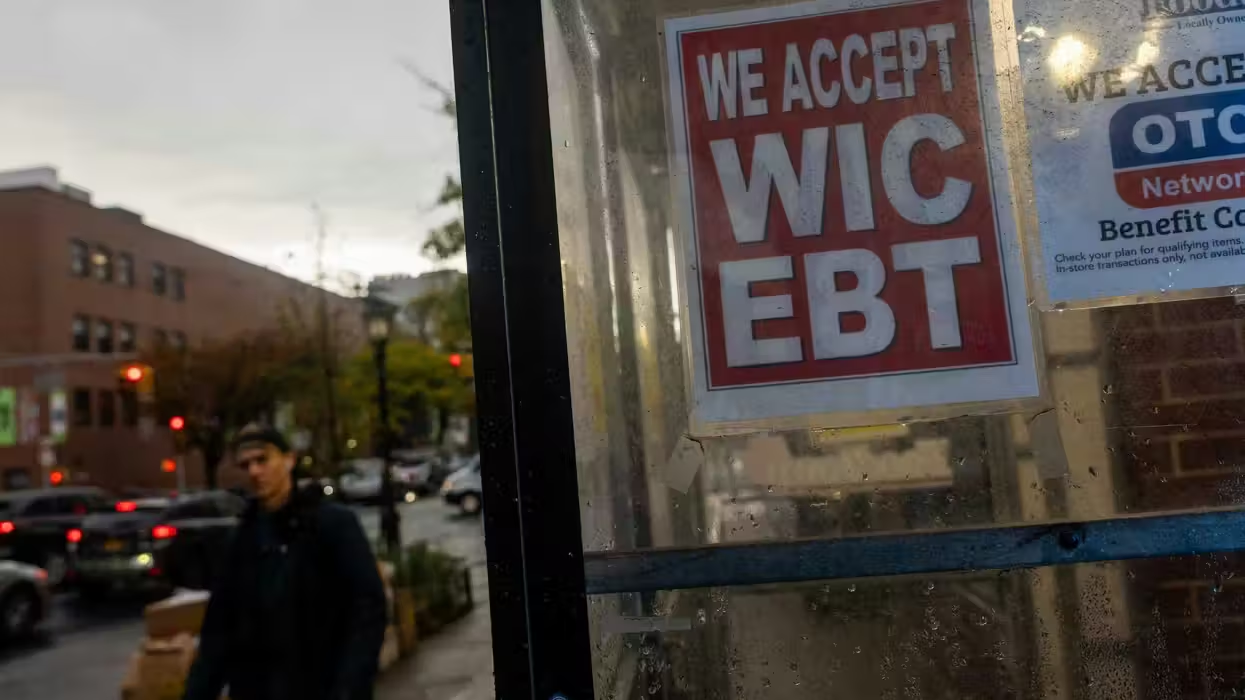
© 2025 Blaze Media LLC. All rights reserved.
"Really exciting because it contradicts."
Human embryos might be the gold standard for scientists seeking stem cells that still have the ability to turn into any other human cell, but a new discovery of stem cells in adult organisms could provide another option in the future for therapeutic medicine and research.
The "unexpected" place where these stem cell "factories" were found? Teeth.
 Researchers say they've identified stem cells in the living part of teeth. (Photo credit: Shutterstock)
Researchers say they've identified stem cells in the living part of teeth. (Photo credit: Shutterstock)
Researchers from the Karolinska Institute in Sweden found that the living part of teeth has a small amount of stem cells, which help repair the tooth, that are capable of forming both hard and soft tissues.
“We have identified a previously unknown type of stem cells that surprisingly enough belong to the nerves of the tooth; these are nerves that would normally be associated with the tooth's extreme sensitivity to pain,” Kaj Fried with the institute's department of neuroscience and one of the study authors, said in a statement.
The study about the discovery, published this week in the journal Nature, stated that the "origins of mesenchymal stem cells have been the subject of considerable discussion," but it wasn't until now that researchers were able to pinpoint the origins of such cells in mouse teeth.
"It has been thought for decades that the dental mesenchymal stem cells giving rise to pulp cells and odontoblasts derive from neural crest cells after their migration in the early head and formation of ectomesenchymal tissue," the study abstract stated. "Here we show that a significant population of mesenchymal stem cells during development, self-renewal and repair of a tooth are derived from peripheral nerve-associated glia. Glial cells generate multipotent mesenchymal stem cells that produce pulp cells and odontoblasts. By combining a clonal colour-coding technique with tracing of peripheral glia, we provide new insights into the dynamics of tooth organogenesis and growth."
“The fact that stem cells are available inside the nerves is highly significant, and this is in no way unique for the tooth. Our results indicate that peripheral nerves, which are found basically everywhere, may function as important stem cell reserves," another study author, Igor Adameyko, said in a statement. "From such reserves, multipotent stem cells can depart from the nerves and contribute to the healing and reformation of tissues in different parts of the body."
Ophir Klein, University of California, San Francisco, developmental biologist, who was not involved with the research, told Science Magazine the discovery is "really exciting because it contradicts what the field had thought in terms of the origin of mesenchymal stem cells.”
But he cautioned that the findings had to be confirmed before "we really put the nail in the coffin."
Another well documented area where adult stem cells reside is in bone marrow, but there are a few other places where they can still be found as well. Embryonic stem cells are thought to be so valuable in health science because they are totally pluripotent, meaning they have the ability to turn into any other type of cell. Adult stem cells, according to the National Institutes of Health, can be a bit more tricky in that they're "thought to be limited to differentiating into different cell types of their tissue of origin."
(H/T: Gizmodo)
—
Front page image via Shutterstock.
Want to leave a tip?
We answer to you. Help keep our content free of advertisers and big tech censorship by leaving a tip today.
Want to join the conversation?
Already a subscriber?
more stories
Sign up for the Blaze newsletter
By signing up, you agree to our Privacy Policy and Terms of Use, and agree to receive content that may sometimes include advertisements. You may opt out at any time.
Related Content
© 2025 Blaze Media LLC. All rights reserved.
Get the stories that matter most delivered directly to your inbox.
By signing up, you agree to our Privacy Policy and Terms of Use, and agree to receive content that may sometimes include advertisements. You may opt out at any time.






